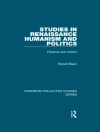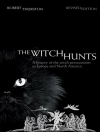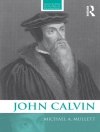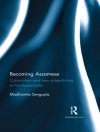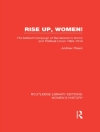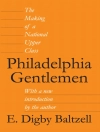This book examines biblical and rabbinic law as a coherent, continuing legal tradition. It explains the relationship between religion and law and the interaction between law and morality. Abundant selections from primary Jewish sources, many newly translated, enable the reader to address the tradition directly as a living body of law with emphasis on the concerns that are primary for lawyers, legislators, and judges. Through an in-depth examination of personal injury law and marriage and divorce law, the book explores jurisprudential issues important for any legal system and displays the primary characteristics of Jewish law.
A Living Tree will be of special interest to students of law and to Jews curious about the legal dimensions of their tradition. The authors provide sufficient explanations of the sources and their significance to make it unnecessary for the reader to have a background in either Jewish studies or law.
विषयसूची
PREFACE
ACKNOWLEDGMENTS
Part I: The Literature and Methods of Jewish Law
INTRODUCTION
B. The Structure and Methods of This Book
C. Who Are the Jews?
D. Common Misconceptions About Jewish Law
Topic One: Biblical Law
A. The Biblical World
B. Fundamentalist and Historical Approaches to the Bible
C. The Structure and Contents of the Bible
D. The Biblical Law Codes
Topic Two: The Biblical Law of Injury
A. The Covenant Code’s Treatment of Personal Injury
B. The Code pf Hammurabi
C. The Hittite Laws
Topic Three: Biblical Jurisprudence
A. Law and World View
B. Biblical Methods of Resolving Disputes
C. The Source of the Law and Legal Obedience: The Covenant
D. Reasons for Obeying the Law
E. Law and Justice in the Bible: The Relationship Between Moral Norms and God’s World
F. Biblical Law and Change: Adapting Divine Law to New Circumstances
Topic Four: Rabbinic Law of Injuries
A. An Overview of the History and Literature of the Second Temple and Rabbinic Periods
B. Midrash Halakhah
C. Mishnah
D. California Jury Instructions
E. Gemara on Injuries
F. Sectarian Laws of Injuries
Topic Five: The Oral Torah: Rabbinic Exegesis and Oral Traditions
A. Two Ways of Dealing with a Fixed Text I: Exegesis and Its Justification
B. Two Ways of Dealing with a Fixed Text I: The Methods and Uses of Exegesis
C. Two Ways of Dealing with a Fixed Text II: The Oral Tradition
D. Continuity and Change
E. The Limits of the Flexibility of the Text and the Tradition: Opposition Movements in Jewish Legal History
Topic Six: The Authority and Morality of the Tradition
A. The Basis for Obedience of the Law
B. Law and Morality
Topic Seven: Rabbinic Court Procedures
A. The Structure and Jurisdiction of Courts
B. Systems of Proof and Rules of Evidence
C. Problems with Using Courts
D. Alternatives to Courts
Topic Eight: The Repsonsa Literature
A. The Talmudic and Geonic Periods: Hesitant Beginnings
B. The Eleventh to Fifteenth Centuries: Franco-Germany and the Spain-North Africa
C. The Sixteenth to Twentieth Centuries: The Aharonim of the Eastern Mediterranean and Eastern Europe
D. World War II – Present: America: Four Movements, Four Conceptions of Jewish Law
E. World War II – Present: Israel
Topic Nine: Codes
A. The Types of Codes and Their Use
B. The Literature of Jewish Codification
C. Pros and Cons of Codification
D. Example of Codification: Maimonides on Personal Injuries
Topic Ten: Legislation (Takkanot)
A. The Nature, Development and Justification of Legislation in Jewish Law
B. Maimonides on Legislation: Mishneh Torah, Laws of Rebels (Mamrim)
C. Takkanot of Rabbenu Tam (R. Jacob B. Meir)
Topic Eleven: Custom (Minhag)
A. The Recognition of Binding Customs in Jewish and Common Law
B. The Interactions Between Custom and Law
C. Justifying the Authority of Custom
Topic Twelve: The Interaction Between Jewish Law and Common Law
Part II: Marriage Topic Thirteen: The Nature of Marriage in Jewish and American Law
B. The Contractural Element of Marriage in Civil Law
C. The Social Element in Jewish Marriage
D. The Sacred Element in Jewish Marriage
Topic Fourteen: Conflicts and Choice of Law I: Jewish Recognition of Civil Marriage and Divorce
A. Choice of Law in the Common Law
B. Rabbinic Choice of Law
C. Dina De-Malkhuta Dina and the Traditional Refusal to Recognize Civil Divorce
D. The Operation of Jewish Marital Law Within the Context of Binding, Civil Marital Law
Topic Fifteen: Conflicts and Choice of Law II: Civil Recognition of Jewish Marriage and Divorce Topic Sixteen: Epilogue: The Future of Jewish Law
A. Jewish Law in Israel
B. The United States
C. Limits on Jewish Law
Appendix A: Time-Line on Jewish Law Appendix B: Books of the Hebrew Bible Appendix C: The Structure of the Mishnah INDEX OF SUBJECTS
INDEX OF SOURCES
लेखक के बारे में
Elliot N. Dorff is Provost and Professor of Philosophy at the University of Judaism. Arthur Rosett is Professor of Law at the University of California at Los Angeles.


